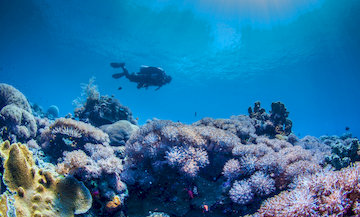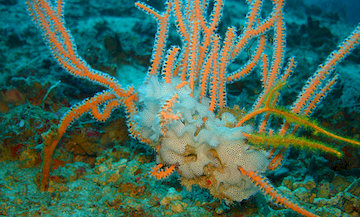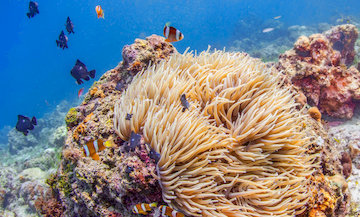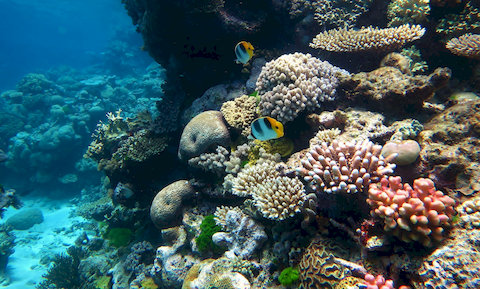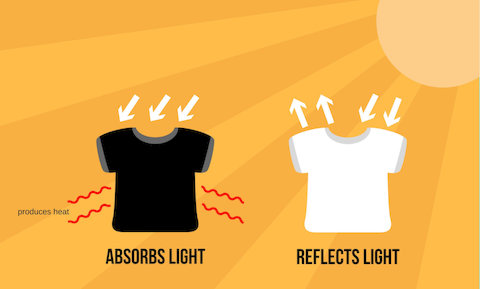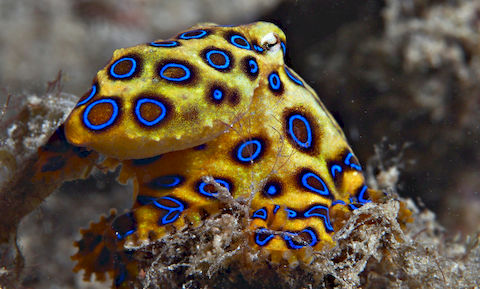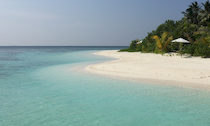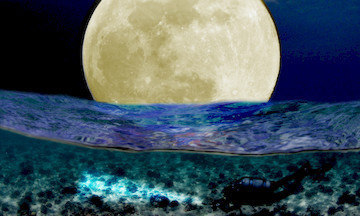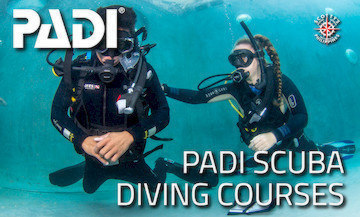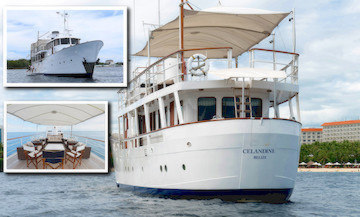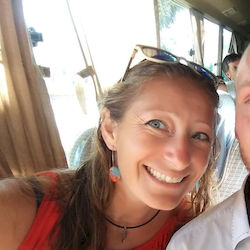Why are corals so colorful?
When you see a coral, do you think its an animal, a plant, or just colorful rocks where fishes live? Corals are actually symbiotic animals and one of the ocean's most fascinating and colorful marine inhabitants, but corals are so much more than just their bright and attractive structures.
This week, we will be talking about why corals are colorful, the diversity of corals in the Philippines and what makes corals so important.
What are corals exactly?
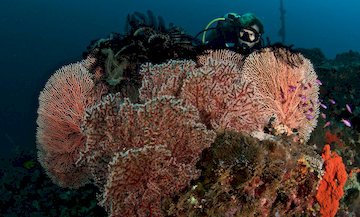 Corals are invertebrate animals that belong to a large group called Cnidaria (like the sea anemone and jellyfish). They are symbiotic, which means they need mutual and beneficial relationships between other organisms to survive.
Corals are invertebrate animals that belong to a large group called Cnidaria (like the sea anemone and jellyfish). They are symbiotic, which means they need mutual and beneficial relationships between other organisms to survive.
Corals have two ways of obtaining food.
One is through feeding at night by extending their tentacles to catch planktons, food particles, and small fishes around them.
The other is through the symbiotic algae called Zooxanthellae, living inside the corals. This type of algae can produce food through photosynthesis (the process of making food using sunlight and carbon dioxide). The algae give nutrients to feed the corals during the day, while the corals provide the algae shelter. Therefore, corals cannot live without the algae Zooxanthellae and vice versa.
How do corals get their color?
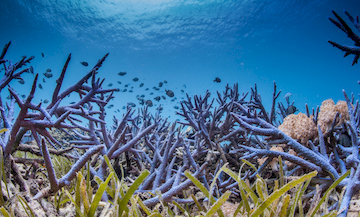 Zooxanthellae, the algae present in the corals, contain a pigment called chlorophyll which gives the coral its green or brown color. Corals may change their color (like to blue, violet, red) to adapt to different light conditions and water temperature.
Zooxanthellae, the algae present in the corals, contain a pigment called chlorophyll which gives the coral its green or brown color. Corals may change their color (like to blue, violet, red) to adapt to different light conditions and water temperature.
Corals on shallow depths have more colors than corals living on deeper reefs. This is because corals found on deep depths don't receive as much sunlight since lightwaves can no longer penetrate deeper down.
Their color changing ability is also a protection mechanism from harmful UV rays. Their change to a luminous color acts as a sunscreen. Observing the color of the coral is one way of determining its health and how it is adjusting to its environment.
How are coral reefs made?
Soft corals grow spines to support their bodies while hard corals build their skeletons by secreting layers of calcium carbonate over time.
Hard corals are known as reef builders because when they make their structures close to each other, they create a habitat for different marine species known as the coral reef.
The coral reefs play the most critical part in the marine ecosystem for habitat and food. Some corals are responsible for water filtration, and some provide nutrients for their neighbor corals or other aquatic creatures. The coral reefs are vital for our ocean friends to survive.
The Diversity of Corals in the Philippines
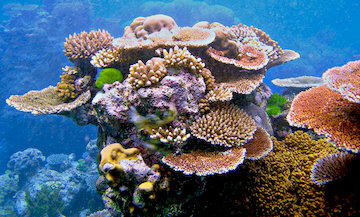 The Philippines is at the center of the Coral Triangle, which means that the country is rich in marine biodiversity. The Coral Triangle is an area where more species of corals and fishes are living in than in any other marine environment in the world.
The Philippines is at the center of the Coral Triangle, which means that the country is rich in marine biodiversity. The Coral Triangle is an area where more species of corals and fishes are living in than in any other marine environment in the world.
Corals in the Philippines are the most colorful in the world because the country is tropical. The coral reefs receive enough sunlight on most days, making them vary in color.
The Philippines' coral reefs have more than 450 species of corals and over 900 species of reef-associated fishes. Records also indicate that the country has about 3, 212 fish species where 731 of which provide food and livelihood to millions of Filipinos everyday.
The diversity of corals make scuba diving extraordinary in the Philippines. The country has a lot of diving sites if you want to witness the biodiversity and magnificence of the country's coral reefs.
One of the six rare double-barrier reefs is in the Philippines, and it is called the Danajon Bank double-barrier reef. Other fantastic diving sites are the Tubbataha Reef, Malapascua Island, Apo Island, Balicasag Island and Mactan Island, to name a few.
The Importance of Coral Reefs
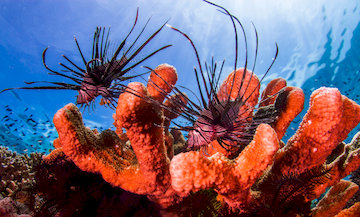 When corals are exposed to pollution, ocean acidification and unusual warmer temperatures, it starts to cast out all their algae in response to the stress until they turn white. This phenomenon is called coral bleaching. Corals can survive for thousands of years, but without their symbiotic algae, they die; what's left will be the white coral skeleton.
When corals are exposed to pollution, ocean acidification and unusual warmer temperatures, it starts to cast out all their algae in response to the stress until they turn white. This phenomenon is called coral bleaching. Corals can survive for thousands of years, but without their symbiotic algae, they die; what's left will be the white coral skeleton.
You may ask, what does the coral reef have to do with us when we don't even live in it? Coral reefs are vital to our planet. Coral reefs are often also known as the Rainforests of the Sea because it protects us from storms and provides 70% of our oxygen.
The ocean is also a major food source. Without the coral reefs, the whole marine ecosystem would collapse, resulting in low or no food supply from the ocean at all.
Why Coral Reefs are Vital
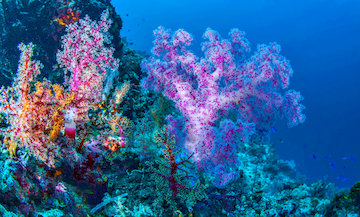 When corals are exposed to pollution, ocean acidification and unusual warmer temperatures, it starts to cast out all their algae in response to the stress until they turn white. This phenomenon is called coral bleaching. Corals can survive for thousands of years, but without their symbiotic algae, they die; what's left will be the white coral skeleton.
When corals are exposed to pollution, ocean acidification and unusual warmer temperatures, it starts to cast out all their algae in response to the stress until they turn white. This phenomenon is called coral bleaching. Corals can survive for thousands of years, but without their symbiotic algae, they die; what's left will be the white coral skeleton.
You may ask, what does the coral reef have to do with us when we don't even live in it? Coral reefs are vital to our planet. Coral reefs are often also known as the Rainforests of the Sea because it protects us from storms but the most important is that seas and oceans provide 70% of our oxygen.
The ocean is also a major food source. Without the coral reefs, the whole marine ecosystem would collapse, resulting in low or no food supply from the ocean at all.
Conservation and safety for Coral Reefs
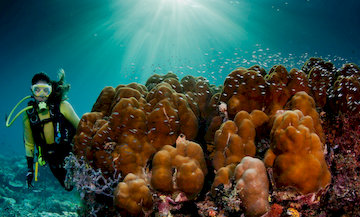 Unfortunately, the coral reefs in the Philippines are under massive threat. Because of water pollution, improper fishing practices, and destructive human activities, the country's coral reefs may collapse! This can affect the livelihood of millions of locals and have dire consequences to global marine biodiversity.
Unfortunately, the coral reefs in the Philippines are under massive threat. Because of water pollution, improper fishing practices, and destructive human activities, the country's coral reefs may collapse! This can affect the livelihood of millions of locals and have dire consequences to global marine biodiversity.
The Philippines' government and different private organizations try to work towards conserving and preserving the country's reefs. Some regions and cities are banning plastic to reduce waste that may end up in our ocean.
Laws were also made to protect marine sites in the Philippines. There are areas where fishers are not allowed to fish. Local government units are implementing rules and laws to promote safer fishing practices and preserve their fishing grounds for future generations.
What can YOU do for corals?
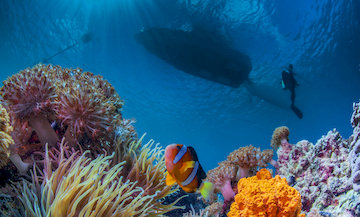 One of the less obvious but a deadly contributor to coral bleaching is the harmful chemicals found in sunscreens. Sunscreens containing the chemicals oxybenzone and octinoxate increase coral bleaching and cause harm to other marine animals, not just corals.
One of the less obvious but a deadly contributor to coral bleaching is the harmful chemicals found in sunscreens. Sunscreens containing the chemicals oxybenzone and octinoxate increase coral bleaching and cause harm to other marine animals, not just corals.
At Scotty's, we highly encourage our guests to use 100% natural and cruelty-free sunscreen like the SafeProtect SPF30 Sunscreen from Human Nature. In all of Scotty's Dive centers or dive shops in Bohol, Cebu and Boracay, you will not find sunscreens which are harmful for coral reefs.
It does not only protect you from harmful UV rays, but it is also reef-friendly because it only uses all-natural ingredients. You can make a big difference towards the conservation of our reefs by making this small change in sunscreen on your vacations.
Why are Corals Colorful Researches and References
If you want to know more about why are corals colorful, take a look at our references below.
Below are few links we have used as references, images we use are from wikipedia, wikicommon, Patrice Laborda, and Paul Cowell.
- Coral Triangle
- More colors that we can see in corals
- Colorful Corals
- Coral reef many colors
- What are corals?
- Bright colors of corals
- Philippines Corals' Profile
- Philippines Coral Reef
- Philippines Amazon's of the sea
- Sunscreen killing corals
- Coral at BBC
- Sunscreen safe protect
Last, but not Least
If you would like to receive interesting content like this in your email Inbox, subscribe to our newsletter.
In addition to our monthly newsletter, we will send you our weekly e-Bulletin with one fascinating topic, like today's article above. There will be no advertising nor sales pitch.
As always we want to thank Youtube and Wikipedia commons for some amazing images and videos on this page!
Thanks for reading, and if you wish, see you next week!
The Research and Media Team at Scotty's.
More Pictures About Why are Corals Colorful


